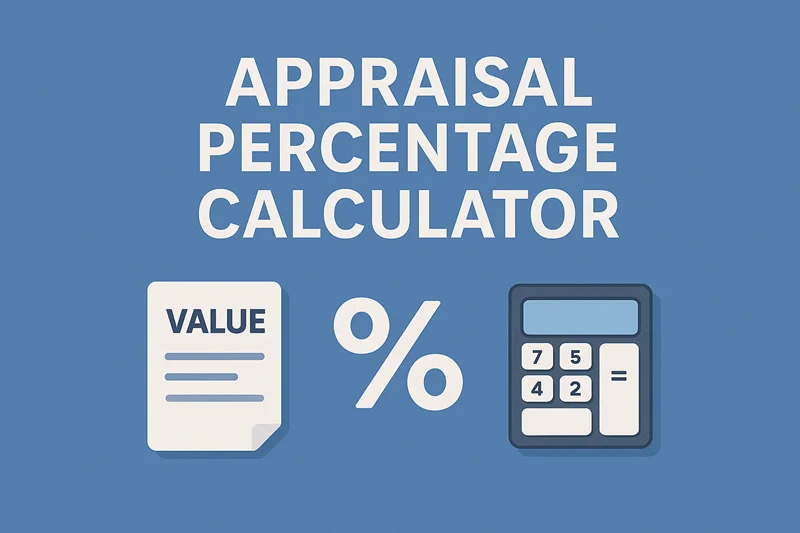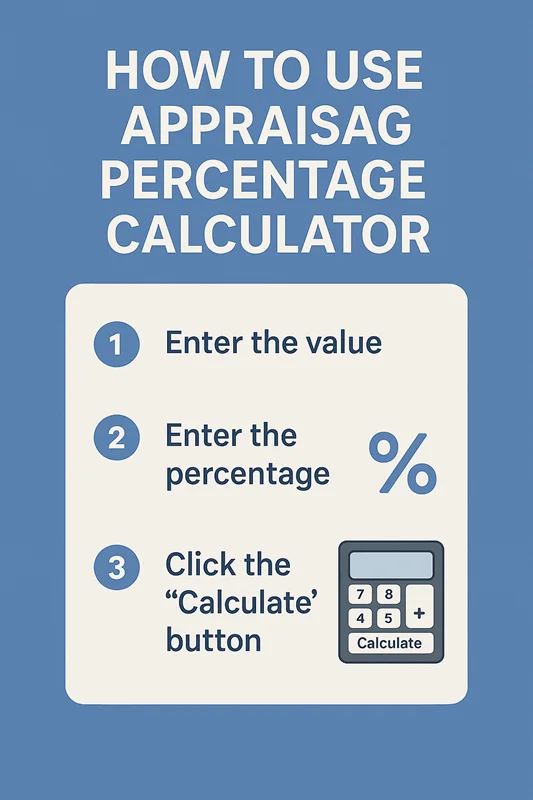An appraisal percentage represents the rate of increase in your salary compared to your previous compensation. It’s the percentage by which your current salary exceeds your old salary, typically given during annual performance reviews or promotional cycles.
Understanding how to calculate your appraisal percentage is crucial for several reasons. It helps you evaluate whether your salary increase meets industry standards, negotiate better compensation packages, and track your career growth over time. Whether you’re expecting a raise or planning your financial future, knowing your exact salary increment percentage empowers you to make informed career decisions.
Calculating your appraisal percentage manually is straightforward once you understand the basic formula. Here’s a step-by-step guide to help you determine your salary hike percentage.
The fundamental appraisal calculation formula is:
Appraisal Percentage = ((New Salary – Old Salary) / Old Salary) × 100
Follow these simple steps to calculate your appraisal percentage:
When calculating appraisal percentages, it’s important to use consistent salary figures. You can calculate based on either gross salary (before deductions) or net salary (after deductions), but ensure you’re comparing like with like.
Gross salary includes your basic salary plus allowances before any deductions for taxes, provident fund, or insurance. Net salary is your take-home pay after all deductions.
For appraisal calculations, most professionals use gross salary figures as they provide a clearer picture of the actual increment without the variables of changing tax brackets or deduction amounts.

While manual calculations are important to understand, an online appraisal percentage calculator offers several advantages that make the process more efficient and reliable.
Online calculators eliminate the risk of mathematical errors that can occur during manual calculations. They automatically apply the correct formula and handle decimal places precisely, ensuring you get accurate results every time.
A salary hike calculator provides instant results. Instead of spending time with manual calculations, you simply input your old and new salary figures and receive your appraisal percentage immediately.
Many online tools offer additional features like calculating future salary projections, comparing multiple appraisal scenarios, or converting between different salary structures (monthly to annual, gross to net).
Online calculators often provide well-formatted results that you can easily share with colleagues, HR departments, or use in salary negotiations.
Let’s work through practical examples to demonstrate how percentage calculations work in real-world scenarios.
Suppose your current monthly salary is $5,000, and you receive a 10% appraisal. Here’s how to calculate your new salary:
To verify: ((5,500 – 5,000) / 5,000) × 100 = 10%
Let’s say your salary increased from $4,500 to $5,100. What’s your appraisal percentage?
Using the salary increment percentage formula:
For annual figures, the process remains the same:
Understanding what influences your appraisal percentage can help you better prepare for performance reviews and salary negotiations.
Your personal performance directly impacts your salary increment percentage. Key factors include meeting or exceeding targets, taking on additional responsibilities, developing new skills, and contributing to team success. Consistent high performance typically results in higher appraisal percentages.
Organizations often have structured appraisal policies that determine salary hike ranges. These policies consider factors like budget allocations, market competitiveness, and overall company performance. Understanding your company’s appraisal framework helps set realistic expectations.
Market conditions significantly influence salary increments. During economic growth periods, companies may offer higher appraisal percentages, while economic downturns might result in modest or no salary increases. Industry growth rates also affect individual company policies.
Different roles and seniority levels typically have different appraisal percentage ranges. Entry-level positions might see higher percentage increases due to rapid skill development, while senior positions might have smaller percentage increases but larger absolute amounts.

A good appraisal percentage varies by industry, role, and economic conditions. Generally, annual appraisals between 8-15% are considered reasonable for average to good performers. Exceptional performers might receive 15-25% or higher. However, these ranges can vary significantly based on your specific circumstances.
Most companies conduct annual appraisals, though some organizations review salaries bi-annually or quarterly. The frequency often depends on company size, industry practices, and individual performance cycles. Startups and fast-growing companies might offer more frequent appraisals.
Absolutely! Manual calculation using the basic formula is straightforward and helps you understand the mathematics behind your salary increase. However, online calculators provide convenience and reduce the chance of calculation errors, especially when dealing with complex salary structures.
For standardized comparisons and discussions with HR or management, use gross salary figures. This approach eliminates variables like changing tax rates or deduction amounts that might affect net salary calculations differently across time periods.
Understanding your appraisal percentage helps you benchmark against industry standards and company policies. Research typical appraisal percentages in your field and use this data to support requests for higher increments during performance reviews.
If your appraisal percentage appears below market standards, prepare for constructive discussions with your manager. Document your achievements, research industry benchmarks, and present a case for why you deserve a higher increment based on your contributions and market value.
Mastering appraisal percentage calculations empowers you to make informed career decisions and engage confidently in salary discussions. Whether you choose to calculate manually using the simple formula or leverage the convenience of an online appraisal percentage calculator, understanding these concepts is essential for professional growth.
The key takeaways include understanding the basic calculation formula, recognizing factors that influence salary hikes, and knowing when and how to use both manual calculations and online tools. Regular monitoring of your appraisal percentages helps track career progression and ensures you’re receiving fair compensation for your contributions.
For quick and accurate results, consider using a reliable salary hike calculator that can handle various salary structures and provide instant calculations. These tools complement your understanding of manual calculations and streamline the process of evaluating salary increments throughout your career journey.


Quickly convert your CGPA to accurate percentage.